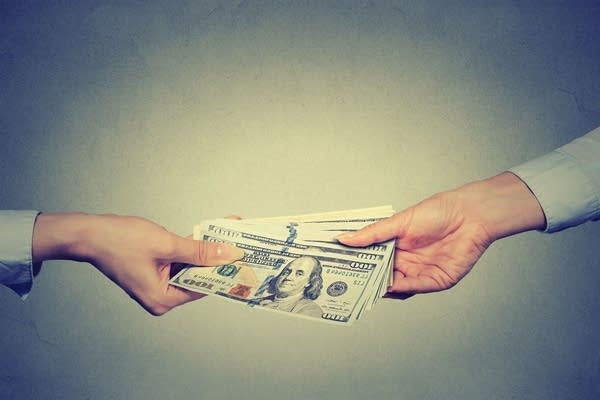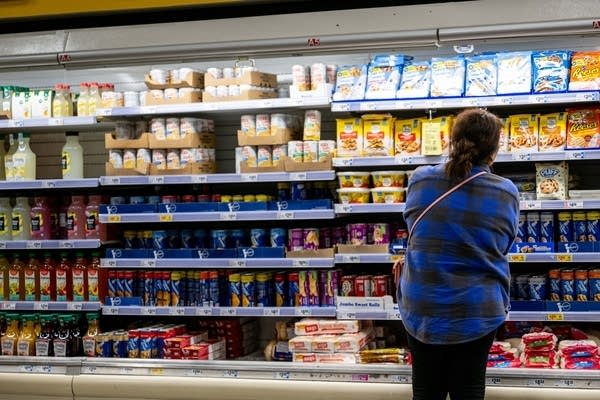Why you might find two Louis Vuitton stores on the same block
Luxury loves company. Two stores from the exact same fashion house might sit within a small radius.

This is just one of the stories from our “I’ve Always Wondered” series, where we tackle all of your questions about the world of business, no matter how big or small. Ever wondered if recycling is worth it? Or how store brands stack up against name brands? Check out more from the series here.
Listener Mickey Aggarwal from San Francisco asks:
Why do luxury brands have many stores all within a very small proximity in tourist areas?
Head to a tourist spot in a major city and you’ll likely encounter a top fashion house like Louis Vuitton, trying to lure you in with designer bags and the latest couture. Walk a few minutes and you may encounter Louis Vuitton again. but you didn’t walk in a circle.
Clustering is common among the world’s top fashion houses. “Luxury loves luxury,” said Andrew Turf, senior vice president at CBRE, a commercial real estate services and investment firm.
Why? Sometimes there are mundane reasons, like overlapping leases. But multiple stores also help luxury brands capture different clientele, which can vary even within a small area,
These varied storefronts will often offer different merchandise and establish different types of relationships with the customer, all in service of catering to a wide swath of shoppers with deep pockets.
Let’s look at Los Angeles for a sense of how this works. Chanel has a flagship store on Rodeo Drive, the famed 3-block stretch in Beverly Hills, along with a 4,000 square-foot shop inside Saks Fifth Avenue, just a 6-minute walk away. Then a third Chanel boutique at Neiman Marcus two minutes away from Saks.
LA residents don’t typically gravitate toward a tourist destination like Rodeo, and may opt for their local department store instead, Turf said.
You see the same dynamic in New York City. “You might have a store in New York on Madison Avenue where you get the local traffic, and then on Fifth Avenue where you capture the tourist trade,” said Susan Scafidi, founder and director of the Fashion Law Institute at Fordham School of Law. These two streets are only 420 feet apart.
Retailers can use customer data to track where these different shoppers live, Scafidi said.
Customers who are shopping at standalone boutiques are, ideally, people who are loyal to the brand and will buy sunglasses, nail polish, luxury handbags and the latest runway looks, Scafidi said.
The brand can “curate an experience for the customer” that they might not be able to at a department store, and the customer can cultivate a long-term relationship with the store’s sales associates, Scafidi said.
But at a department store, you get to try on clothing and jewelry from different brands all in one stop.
Luxury retailers can build their brand by association when they’re next to a competitor, Scafidi said.
“In a case like Saks, for example, the luxury brand won't have a shop-in-shop likely in just one Saks Fifth Avenue or one Bloomingdale's. It will have it in multiple, if not all of their stores,” Scafidi said. “They want to maintain that presence.”
Shoppers might have a totally different experience at stores from the same luxury brand. You might encounter clothing, bags, jewelry and cosmetics at one location, while you might only find fragrances at another. “The gateway drugs, if you will,” Scafidi said.
At different stores, women and men will also be able to find merchandise specific to their gender. In Beverly Hills, Louis Vuitton has a men’s store, a women’s store down the block, and a store inside a nearby Saks Fifth Avenue.
By having separate stores, Louis Vuitton won’t need to find a very large space to house both men’s and women’s merchandise, Scafidi said.
“Another reason is that not all women feel comfortable, for example, trying on shoes in the same space as men,” Scafidi said.
Brands are able to make these public changing areas “more private, a little less voyeuristic,” Scafidi said. “That's not speculation, I've had brands tell me that,” Scafidi said.
Or vice versa: men might feel more comfortable in a store that’s targeted to them, Scafidi added.
While having one brick-and-mortar location in the age of ecommerce might seem risky, much less two within a 1-mile radius, luxury brands are actually expanding in the U.S.
Luxury sales hit almost $70 billion in 2022, according to the real estate services company JLL. Louis Vuitton's parent company, LVMH, opened up 108 new stores between 2021 and 2022, while Gucci’s parent the Kering Group, opened 100. Luxury retailers ended up leasing more than 650,000 square feet between 2022 and 2023, JLL found. LVMH founder Bernard Arnault is the richest man in the world, with a net worth of $221 billion.
Brands want a physical store in major streets in major cities because their customers will want to shop when they’re traveling, Scafidi said.
“Luxury has been post-pandemic strong. I think that we have a lot of pent-up demand. Nobody could see our shoes for a few years there,” Scafidi said.













